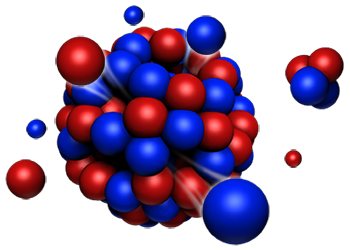Speaker
Description
Beryllium reflectors are used at spallation neutron sources in order to enhance the low-energy flux of neutrons emanating from the surface of a cold and thermal moderator. The design of such a moderator/reflector system is typically carried out using detailed Monte-Carlo simulations, where the beryllium reflector is assumed to behave as an ideal poly-crystalline material. In reality, however, inhomogeneities and impurities in the beryllium could lead to discrepancies between the performance of the actual system when compared to the modeled system. The dependence of the total cross section on the crystallite size, in the Bragg scattering region, could influence the reflector performance, and if such effect is significant, it should be taken into account in the design of the moderator/reflector system.
While there are studies on the influence of the impurities in pure beryllium on neutron scattering behavior, the effect of crystallite structure on its neutronic performance has not been investigated explicitly. To investigate this phenomena in more detail, we have set up a program to examine the effect of crystalline structure on the neutron cross-section of beryllium, both theoretically and experimentally. In this paper, we report on the preliminary results of using cross-section libraries, which include corrections for the crystallite size effect, in spallation source neutronic calculations.

